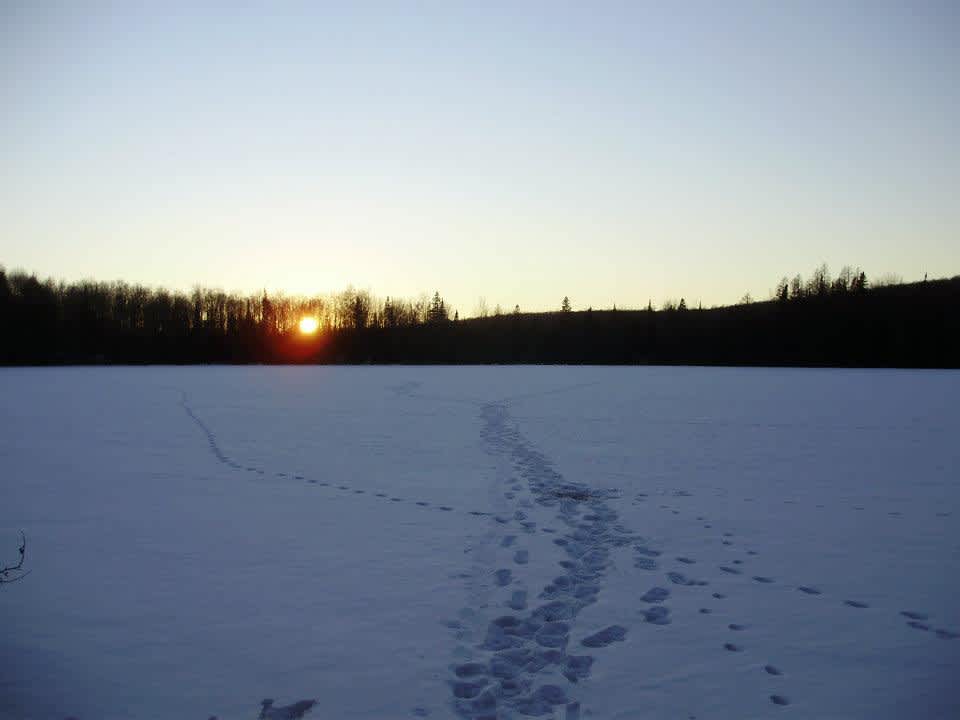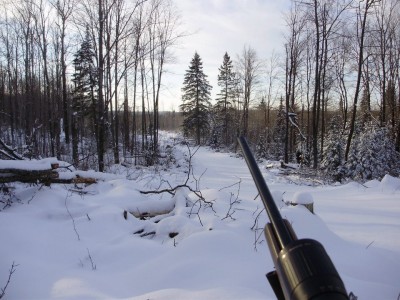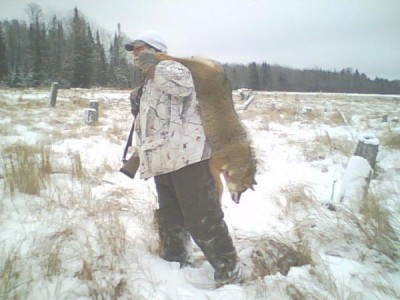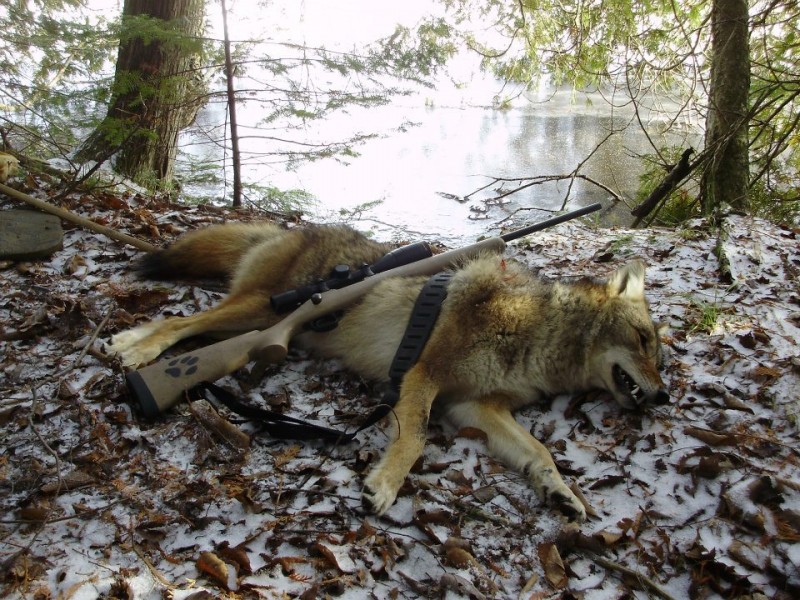Coyote Calling Made Easy
Bernie Barringer 01.28.14

Whether your goal is to improve fawn survival rates, get some fresh air, or cash a fur check, coyote calling is an exciting winter activity. Here are the basics on how, where, and when to do it.
There is an axiom spoken of by coyote trappers and hunters, “Find the food and you’ll find the coyotes.” This seems to hold true no matter where one is pursuing coyotes in North America. Duane Fronek from Wisconsin finds the areas the deer are wintering and uses that as a starting point. “I look for areas that hold deer like clear cuts that border swamps or setting up on rivers that are frozen over that go by swamps and tag alders,” he told me. “Deer hang in these areas and coyotes frequently cruise the rivers checking those areas out.”
Habitat is a little different in the farm country of Indiana where Jake Socha calls his coyotes, but food is still the key to finding them. “Coyotes in Indiana do like to hunt along fencerows and we have a lot of them,” he said. “My best and preferred setup is on a fencerow on the upwind side of a woods, marsh, or thicket.”

Socha said that coyotes do not like to reveal themselves by crossing open areas while coming to a call so he likes to set up in such a way that it allows the coyotes to use cover until they are close. “They like to circle downwind and come up through woods, marshes, and thickets,” He explained. “I always have a hunting partner who usually does the shooting setup between 50 to 70 yards upwind on a fence row, connected to a woods, marsh, or thicket. Then I (the caller) set up a short ways beyond him, putting the focus on me, and not the shooters area. This helps minimize the movement they may possibly see or hear.”
Once you are in a good spot, using the right call is key. “For calling sequences I like to keep it simple when starting out in early winter,” Fronek said. “Seems the regular rabbit or fawn distress does the job early on. I use mainly open reed calls, then as the season progresses start with a howl before the distress, depending on how much calling pressure has been around. Later into the season when the breeding is taking off, a howl or two is all I’ll use on-stand and then sit it out for a half hour.” Fronek believes that hunting pressure can condition the coyotes so he takes a low-profile approach in the late season. “I actually back off on calling sounds later in the season and may only howl a time or two on a set and then silence.
“Later in the season I will go farther off the roads to call, sometimes walking into a spot that may be a mile in. Most of the easier-to-get-to spots have been called heavy and the coyotes just don’t respond, but if you go to them you have a better shot at calling one in, they seem more relaxed.”

Socha agreed, and shared that realism is the key to getting them coming. “With a reed call, you can really emphasize the fact your mimicking a dying rabbit, and can adjust everything in one breath and really sound like a dying rabbit. A real dying rabbit doesn’t just repeat itself over and over with the same pitch and volume like you get out of electronic calls. Don’t be afraid to let out a howl here and there while using a dying rabbit call, because nine times out of 10 if they howl back, they’re on the way, so get ready.”
Watching for incoming coyotes is an art in itself, and sometimes they will really surprise you where they show up. When hunting alone, it is often best to face downwind and have a clear field of view to the sides if the cover is fairly thick. If you’re in open country, facing towards the location you expect the coyotes to come from is best. Of course, having a partner eliminates much of the guesswork because you can eyeball a lot more area. Keep in mind the advice that Socha offered: the shy ones like to circle downwind and they can be right in your lap before you know it if the cover is thick. Getting a coyote to howl before starting the calling sequence can also help you know here to look. If they howl back you have the location pinpointed and you can guess the most likely point of approach.
Calling coyotes is not for the faint of heart. Seeing a predator like a coyote bearing down on you, coming in hard with bloodshed on his mind, is quite an adrenaline rush. And when you pull the trigger and see him pile up, you have the satisfaction of knowing that you fooled him at his own game—not to mention a nice pelt to take home with you.

Follow Bernie’s bowhunting adventures on his blog, bowhuntingroad.com.

